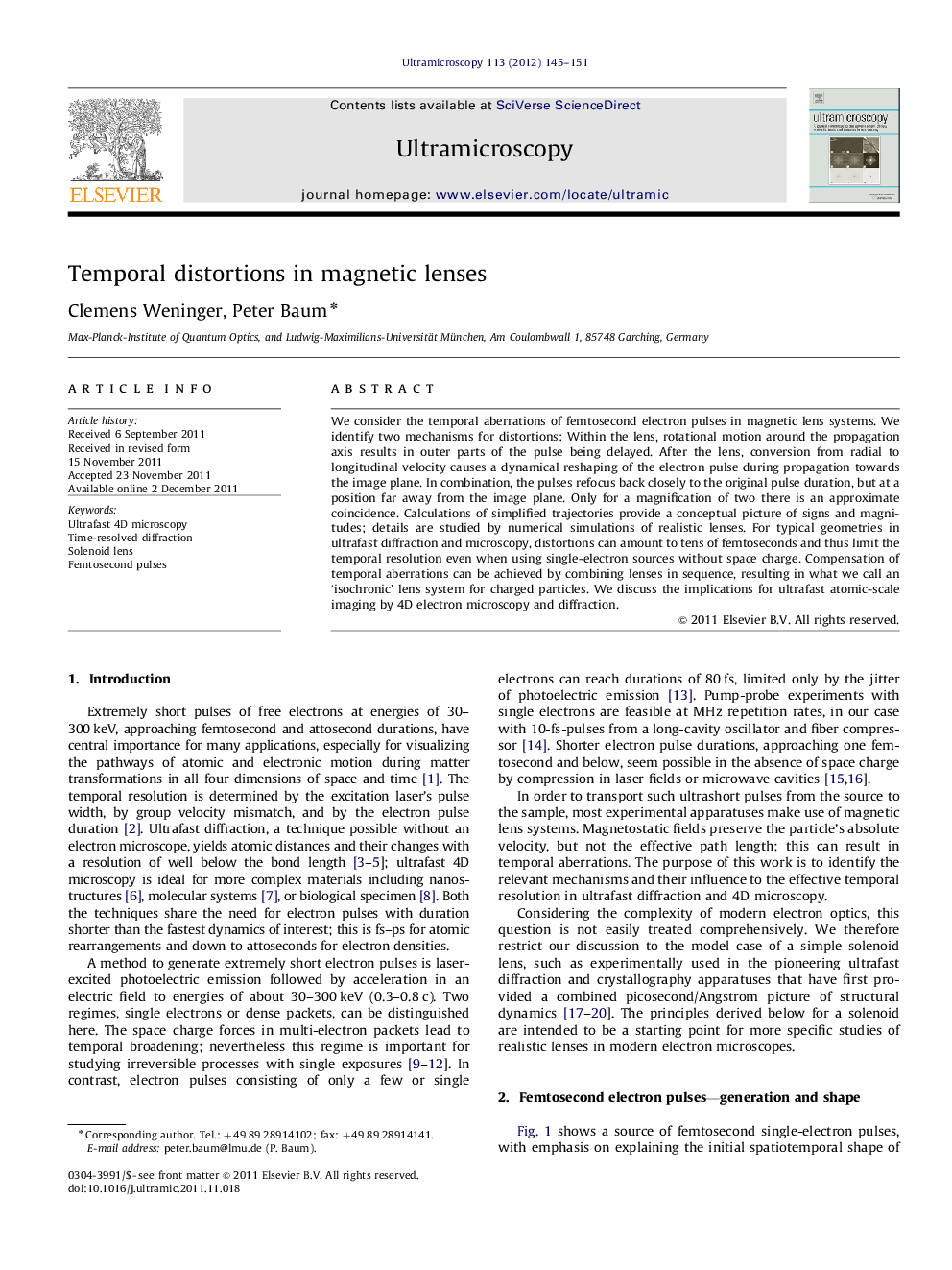| Article ID | Journal | Published Year | Pages | File Type |
|---|---|---|---|---|
| 1677756 | Ultramicroscopy | 2012 | 7 Pages |
We consider the temporal aberrations of femtosecond electron pulses in magnetic lens systems. We identify two mechanisms for distortions: Within the lens, rotational motion around the propagation axis results in outer parts of the pulse being delayed. After the lens, conversion from radial to longitudinal velocity causes a dynamical reshaping of the electron pulse during propagation towards the image plane. In combination, the pulses refocus back closely to the original pulse duration, but at a position far away from the image plane. Only for a magnification of two there is an approximate coincidence. Calculations of simplified trajectories provide a conceptual picture of signs and magnitudes; details are studied by numerical simulations of realistic lenses. For typical geometries in ultrafast diffraction and microscopy, distortions can amount to tens of femtoseconds and thus limit the temporal resolution even when using single-electron sources without space charge. Compensation of temporal aberrations can be achieved by combining lenses in sequence, resulting in what we call an ‘isochronic’ lens system for charged particles. We discuss the implications for ultrafast atomic-scale imaging by 4D electron microscopy and diffraction.
► Magnetic lenses distort the temporal shape of femtosecond electron pulses. ► Two distinct contributions are identified: rotation within the lens and continuous reshaping caused by magnification. ► Numerical simulations and simplified trajectory calculations provide a general, and physical picture. ► Combinations of a microwave cavity with non-distorting lenses are suited to achieve few-femtosecond and μm-sized spatiotemporal focuses at the same time.
